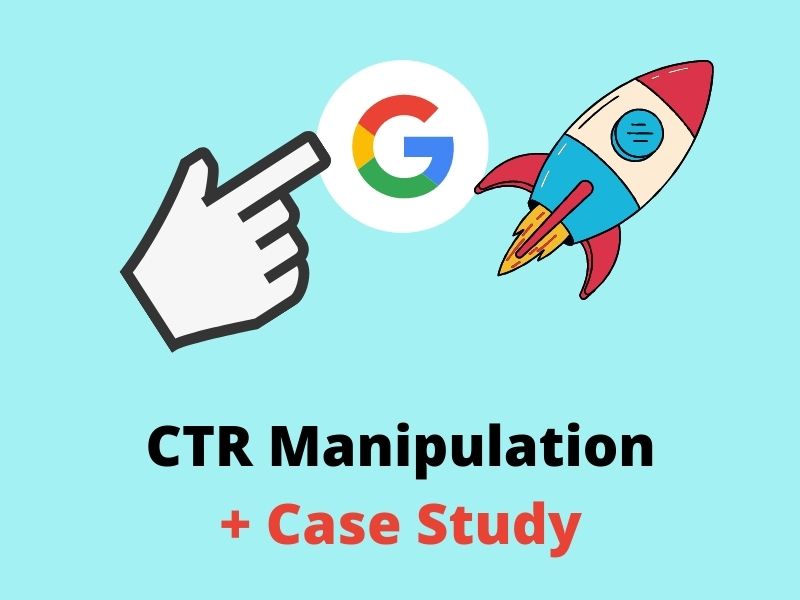Ingenious CTR Manipulation Strategies for Online Success
In the ever-evolving landscape of electronic advertising, understanding and maximizing click-through rates (CTR) has ended up being a critical element of online success. Cutting-edge methods that leverage emotional triggers, together with aesthetically involving styles, can dramatically enhance individual communication. Marketing professionals can use approaches such as A/B testing and data-driven optimizations to refine their techniques. However, the inquiry remains: what certain methods can be efficiently executed to not only record focus but additionally maintain it in a competitive setting? Exploring these techniques might disclose the trick to opening higher engagement and enhanced campaign performance.
Comprehending Click-Through Rate
Comprehending Click-Through Rate (CTR) is essential for any individual entailed in electronic marketing, as it acts as an essential performance indicator for the efficiency of on the internet web content. CTR is calculated by splitting the number of clicks on a particular link or ad by the overall variety of impressions it gets, typically expressed as a portion. A higher CTR indicates that the content reverberates with the target market, prompting them to engage further.
Keeping an eye on CTR is critical for reviewing the performance of numerous digital advertising and marketing techniques, consisting of email campaigns, social media sites advertisements, and search engine advertising. By evaluating CTR information, marketers can recognize effective components within their projects, such as engaging headings or targeted messaging, while likewise discovering areas that may require optimization.
In addition, CTR can be affected by different variables such as target market division, placement of calls-to-action, and general material quality. Recognizing these dynamics permits marketing professionals to refine their methods, guaranteeing that their material not just gets to the desired audience but also inspires them to act. Inevitably, a strong grasp of CTR helps with informed decision-making, leading to enhanced marketing outcomes and greater engagement prices.
Psychological Triggers for Interaction
Leveraging psychological triggers for involvement is essential in driving and boosting click-through rates individual interaction. Wording such as "minimal time deal" urges users to act quickly, minimizing the chance of laziness.
One more effective trigger is social evidence. By showcasing testimonies, user reviews, or showcasing popularity, brand names can impart a feeling of trust fund and trustworthiness. When potential customers see that have benefited from an item or service, they are most likely to engage themselves.
Crafting headlines or calls to action that prompt inquiries or intrigue can tempt customers to click with to discover much more. By flawlessly incorporating these psychological triggers into digital advertising methods, brand names can enhance their click-through prices and foster stronger links with their target market.
Eye-Catching Layout Strategies

Furthermore, the tactical use whitespace can boost readability and focus. By permitting elements to breathe, you can guide users through the content without frustrating them. Typography likewise plays an essential duty; selecting strong, readable fonts can guarantee that messages are quickly absorbable, while differing font dimensions can establish an aesthetic hierarchy.
Integrating engaging images or videos can additionally improve the style, as aesthetic web content often tends to attract more focus than message alone. Furthermore, computer animations and micro-interactions can create a vibrant user experience, making the content more memorable. Ultimately, integrating these design techniques can result in an efficient aesthetic technique that not only records focus yet additionally encourages customers to take action, website here thus enhancing click-through prices considerably.
Data-Driven Optimization Techniques
Data-driven optimization techniques are important for refining electronic advertising efforts and maximizing click-through rates - CTR Manipulation Press Release. By leveraging detailed analytics and user actions data, marketers can recognize patterns and understandings that educate their techniques. Using tools such as Google Analytics, services can track customer interaction, determine high-performing content, and figure out the most efficient channels for reaching target audiences
One trick aspect of data-driven optimization is audience segmentation. By dividing users into distinct teams based upon demographics, passions, and actions, online marketers can tailor their messaging to reverberate a lot more properly with each segment. This personalization improves the significance of material, triggering higher interaction and, subsequently, enhanced CTR.

A/B Checking for Success
A/B testing offers as an effective tool for marketers intending to boost their click-through prices by straight comparing the performance of various material variants. This technique includes providing 2 or more versions of a website, email, or promotion to individuals, enabling online marketers to analyze which alternative yields much better interaction.
To implement A/B screening effectively, marketing experts ought to initially identify a specific element to test, such as headings, call-to-action buttons, or pictures. It is important to specify clear objectives and metrics for success, such as have a peek at this site conversion prices or individual involvement levels. Following this, an arbitrary example of the target audience is subjected to the variations, making sure that the examination results are statistically considerable.
Once the data is accumulated, analyzing the results ends up being important. Marketing experts ought to focus on understanding which variation reverberates more with their audience and why. This repetitive procedure makes it possible for continuous improvement of advertising and marketing approaches, eventually leading to enhanced click-through prices and boosted customer experiences.
Conclusion

Leveraging mental triggers for involvement is critical in driving and enhancing click-through prices user communication. By enabling elements to take a breath, you can lead users with the content without overwhelming them - CTR Manipulation. Inevitably, integrating these style strategies can result in an effective aesthetic technique that not just records focus yet likewise motivates customers to take action, hence enhancing click-through rates significantly
Using tools such as Google Analytics, organizations can track user engagement, identify high-performing web content, and identify the most efficient channels the original source for reaching target audiences.
It is vital to define clear objectives and metrics for success, such as conversion rates or customer involvement levels.